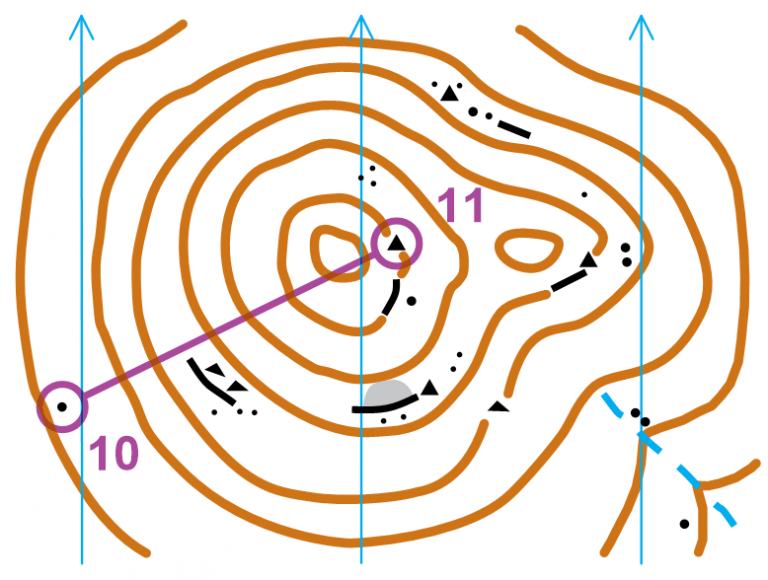Intermediate Orienteering Skills
Lesson 11: Relocation
1. If the features around you don’t match up with the features on the map, or your direction seems wrong, stop immediately! Orientate your map.
2. Then have a careful look around you (all around you, even behind). If you stop immediately, you’ll probably be only slightly off line and will be able to correct your position very easily.
3. If it is not obvious where you are, look carefully at the contours and the big landscape features around you, (where am I on the hillside? Look at the shape of the land around you, which way is the slope facing, how far am I from the top of the hill?, which way the valley is facing?) Also look for any other major features that you can see. think big Try to pick these big features up on the map.
4. Then confirm your position by looking for other smaller detail (“if I’m on this narrow spur, there should be a rock face and boulder just below me… and there they are!”). Don’t jump to conclusions, make certain everything fits.
5. Another trick is to think about where you have come from. Think about the last time you were in total contact with the map, and try to work out where you might have gone. Look around the forest and see if this makes sense.
6. If nothing fits and you have no idea where you are, move to the nearest large feature (top of hill, fenceline, major track, saddle etc) and relocate from there. Once you relocate, make a careful plan to the control and navigate carefully and safely.
When relocating, take your time and remain calm. Everyone has to use the relocation routine at some time during their run, and often many times.
And what you must not do!
Most importantly never just wander, in the hope that the control might suddenly appear, or randomly look behind every boulder. You will very quickly lose huge amounts of time. And never just follow someone else in the hope that they might be going to your control. Because they might not be! Or they might be lost too! Trust your own navigation, and take those few seconds to relocate by yourself. Think logically and calmly.
In Summary
- Stop the very instant that things in the forest don’t match the map.
- Orientate the map and look all around you. .
- Look all around and observe the contours and other big features. Think big.
- Cross-check these with the map and then confirm your exact location with smaller detail.
- Another technique is to retrace on the map where you have come from.
- If it still doesn’t make sense, move to the nearest large feature and try again.
- Take your time. 10 seconds of careful thinking can save 10 minutes.

